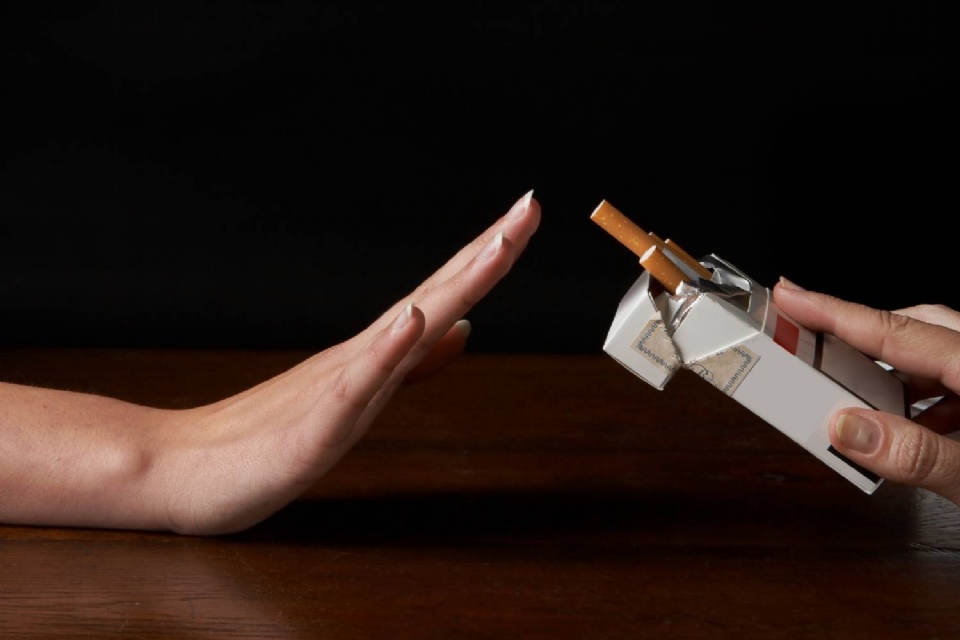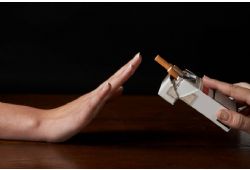Quit smoking now!
For some people, quitting is not that much of a challenge. Others have to plan carefully, get support, and follow through on every small step.
The good news is, many people quit every day, and so can you!
Steps to quitting
These steps will help you to understand how to quit smoking. If you need more help, our quit smoking programs walk you through the quit process in more detail.
Think things through
- Think about why you smoke. Learn about nicotine addiction. List your habits (when and where you smoke) and triggers (what causes you to want to smoke). Write down what you could do instead to break your routines and distract yourself.
- Write down all your reasons for quitting. Think about both the risks of smoking and benefits of quitting. Keep a list of your reasons with you as a reminder.
- Decide how to quit. Look at the different ways to quit. Decide what would work best for you. Talk to your doctor or health care professional if you think you need quit smoking aids or medication.
- Prepare yourself for some challenges. Learn how to deal with withdrawal, cravings, and temptation. Address any quit smoking concerns you may still have.
- Find support. Ask health care professionals, counsellors, friends, co-workers, and family to support and encourage you. Get help from one of your support people if you are struggling, call the pan-Canadian, toll-free quitline at 1-866-366-3667, or visit the quit smoking website for your province or territory.
Nearly two-thirds of all Canadians who have ever smoked have already quit. This includes men and women of all ages and all levels of addiction. You can do it too!
Plan for success
- Create an action plan. Set your quit date for a time when you are not too stressed. Tell people so you commit to the date and line up support. Write down your goals in small steps, and include rewards for each goal you meet. You're more likely to quit if your goals are written down.
- Be positive and picture success. You have to believe you have it in you to quit. Think about your skills and past successes. Picture your new life as a non-smoker, and imagine how good it will feel.
- Review, practice, and prepare. Go over your goals and reasons for quitting. Start thinking like a non-smoker. Take small steps to prepare for the big day, like delaying your first cigarette of the day or cutting down on the amount you smoke. Remind yourself what you will do if you have cravings or withdrawal symptoms.
- Quit! On quit day, change your routines and avoid situations that might tempt you to smoke. Throw out your cigarettes, ashtrays, and lighters. Expect withdrawal symptoms for a few days. Do things you enjoy to distract yourself. Take it easy and avoid stress.
- Stay quit. Celebrate each success, big and small. If you slip, learn from it, stay positive, and get back to your quit plan.
Slips
A slip is when you have a cigarette or two after you've quit smoking. Many people have an occasional slip. Because smoking can be automatic, you may not even be aware that you're smoking until after you've lit up.
- Don't panic or heap guilt onto yourself. A slip or two does not mean that you have failed. It only means that you continue to be open to starting to smoke again.
- If you slip, the best thing to do is to look at what triggered the slip and figure out how to handle it differently next time.
- Go back to quitting as soon as you can. Do your best not to relapse into regular smoking!
Quitting takes practice. If you try to quit and slip, simply try again. Each time you quit, you learn something new about what to do differently the next time. Keep trying, and you will succeed for good!
Weight gain
Many people are concerned about weight gain after quitting. This is a challenge that needs a positive approach. Remember even if you gain weight, the health risk of a few extra pounds is less than the risk of smoking! For those who put on weight, the average long-term weight gain is 4 to 6 kg (8-13 lbs.). Here are some ideas to help you maintain a healthy weight;
- Become more physically active. People who are physically active before they quit have an easier time maintaining a healthy weight after they quit smoking.
- Eat healthy. Maintain a healthy weight by following Canada's Food Guide to healthy eating. Take time to eat small meals every few hours. Plan what you will eat each day so that you make better food choices.
There are many ways to quit smoking. Some people quit all at once, while others quit gradually. Some people need a lot of help, while others need very little. Some use quit smoking aids. Choose what works best for you!
Don't be discouraged if you've tried one or more of these methods and they didn't work for you the first time. You learn something new each time you try to quit smoking. What didn't work in the past may work now because you approach it differently. The key is to keep trying until you quit for good!
Professional and personal support
Support is available from many different health care professionals. You can ask for guidance from a doctor, pharmacist, nurse, or quit smoking counsellor. You can also get group support from smokers' support groups and online programs.
Quit smoking programs
Health Canada has two programs to help Canadians quit smoking;
- for youth - Quit4Life
- for young adults - On the Road to Quitting
- for adults - On the Road to Quitting
Call the pan-Canadian, toll-free quit line for telephone support. A quit specialist will help you create a quit plan and answer your questions about quitting. The specialist can also help you access information and services in your community and help you cope with cravings and withdrawal symptoms.
- Pan-Canadian Quitline ; 1-866-366-3667
- Quit lines and websites by province and territory
If you are a heavy smoker or if you have tried to quit before, taking medication may help. Research shows that when used as directed, these medications dramatically increase the odds that a person will quit smoking.
There are now four over-the-counter nicotine replacement therapies available in Canada that replace the nicotine in cigarettes, reducing withdrawal symptoms and making it easier to quit gradually;
- Nicotine gum, lozenges, and inhalers are used as needed to control your cravings one at a time. They ease strong cravings when you need extra help or temporary relief. They all administer the nicotine orally and are absorbed through the lining of the cheek.
- Nicotine patches are used for up to three months to replace and gradually reduce the nicotine you are no longer getting from cigarettes. Most are worn full-time on the skin, so they help control cravings continuously and reduce the other effects of withdrawal.
Tip!
If you think you will find withdrawal symptoms too hard to deal with, talk to a health care professional about using medication to help you quit smoking.
There are also two quit smoking drugs currently available by prescription. Although they do not contain nicotine, they still help in other ways with withdrawal symptoms. Some provincial and territorial drug plans cover the costs of these drugs.
- Bupropion is a pill originally developed to treat depression that is also used to reduce cravings and other withdrawal symptoms. It must be started seven to 10 days before you quit. It can be harmful if you have a history of seizures, have had a serious head injury, have an eating disorder, or are pregnant.
- Varenicline is a pill that reduces cravings for nicotine and decreases the pleasurable effects of cigarettes and tobacco. It can be dangerous if you have a history of depression or mental illness.

 In The Latest Issue:
In The Latest Issue:


 BY:
BY: 

Tweet
Share